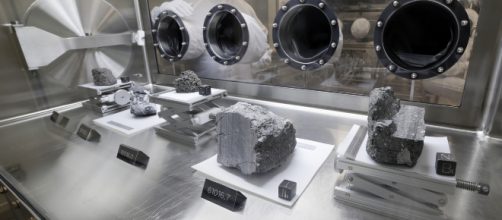NASA's Moon missions have reportedly yielded in more than 840 pounds of samples. Some of these samples have been made public. Small amounts have even been given as gifts to states or other countries. But most samples have remained sealed away from public view.
Now that seems to be about to change. As plans for a new Moon landing are underway, scientists are taking major steps.
Moon samples to be unsealed for the first time
NASA is planning to dispatch teams to further study the Moon samples. Most of the samples have never been exposed to the Earth's atmosphere.
For more than 40 years, the specimens have typically been stored in three ways. Some have been kept in vacuum-sealed packs and some have been frozen. Others have been kept using a special gas concoction.
The bulk of the samples to be studied are from the last three Moon missions. As those missions utilized a rover, they were able to acquire the biggest amount. The original landing by Neil Armstrong and Buzz Aldrin only lasted roughly two and a half hours. As such, despite the historic achievement, it yielded the least amount of samples, according to ABC.
Scientists are reportedly especially nervous about trying to study any gases expelled from the samples. The solid samples have been easy enough to contain.
However, if the gases escape before they can capture them, studies obviously can't be performed on them.
MLive reports that the teams have been chosen from four NASA centers and five other locations. One of the other five is the U.S. Naval Research Laboratory. NASA has long had associations with the U.S. Navy. Many astronauts, including several who went to the Moon, have been Naval Aviators.
NASA hopes to add to its collection soon
Current plans are to have NASA astronauts return to the Moon by 2024. For the first time, specific plans have been made to include at least one woman. The United States had not sent a woman to space during the original Moon missions. Only one of the Soviet Union's cosmonauts that went to space was a woman.
That was Valentina Tereshkova, who traveled to space in 1963. A second female cosmonaut, Svetlana Savitskaya, reached space in 1982. American astronaut Sally Ride reached space the following year. Several women of various nationalities have since made the trip.
Some people have wished for NASA to focus on other things. Among them, to travel further, including to other planets. However, a return to the Moon could be a crucial aspect of these goals.
One of the key ideas about returning to the Moon is to build a base on it. From that base, it would likely be easier to launch new trips further than humanity has previously gone, including to other planets.


